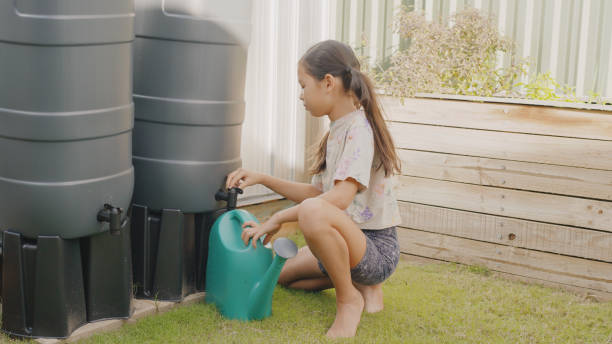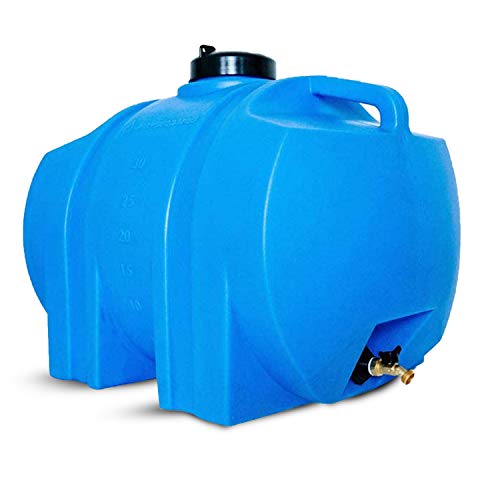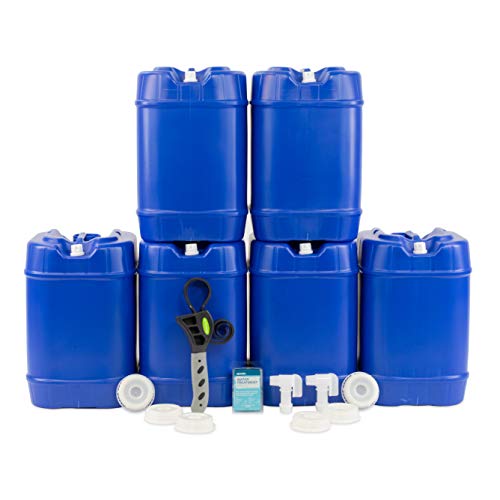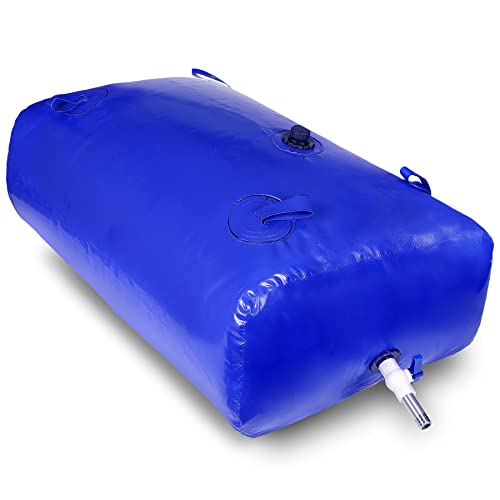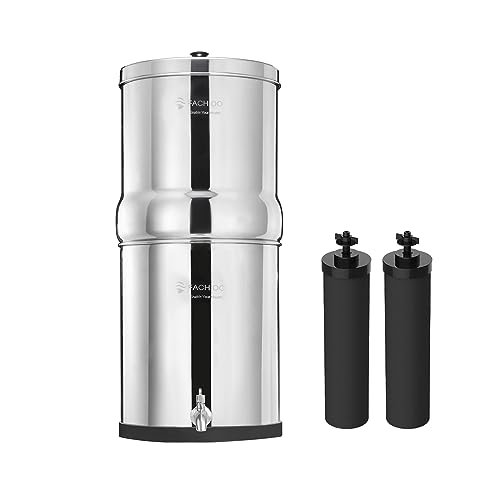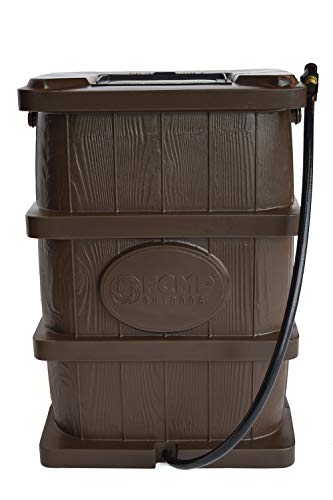A high-quality water storage tank can be used to water your garden, transport drinking water, put out fires, and more — so it's not an investment you should take lightly. Regardless of how you plan to use your water tank, you want to get one that lasts for a price that doesn't break the bank. If you want to make a smart choice but don't want to spend your valuable time researching all the available options, this guide is for you. We’ve researched and reviewed the most impressive water storage tanks of 2023. Whether you're looking to store water for emergency preparedness, irrigation, or any other reason, we have you covered.
- Water Storage Tank FAQs
- Is it possible to move a water storage tank?
- Can I use a water storage tank for drinking water?
- What size water storage tank do I need?
- What are water storage tanks used for?
- How should I maintain my water storage tank?
- What are the signs of a leaking water storage tank?
- Are there any safety precautions I should take with water storage tanks?
- Can I use rainwater with a water storage tank?
- What is the lifespan of a water storage tank?
Buying Guide: Water Storage Tanks
Not sure how to choose the right water storage container for you? Keep reading to find out the main considerations and factors to keep in mind when making your informed decision. Whether you’re looking to harvest rainwater for sustainable use, store emergency water supplies, or manage water resources, this guide will equip you with valuable information to navigate the many options available. From tank materials and capacities to installation tips and maintenance advice, we’re here to empower you on your journey toward efficient and effective water storage solutions at home.
Water Tank Capacity
Determining the appropriate tank capacity is the first step when choosing a water storage tank. Consider your water usage needs, the size of your property, and any future expansion plans. Tanks come in various capacities ranging from small household tanks to large-scale industrial tanks. Think about the space where you plan to place the tank and the dimensions of the area where the tank will be installed. Ensure that the tank’s size and dimensions fit within those size limitations.
Water Tank Material
Water storage tanks are typically made from three primary materials. These include polyethylene, fiberglass, and steel. Polyethylene tanks are lightweight, durable, and resistant to rust. Fiberglass tanks offer excellent corrosion resistance, allowing them to withstand extreme weather conditions. Steel tanks are known for their strength and longevity though they require additional measures to prevent corrosion.
- Plastic: Plastic water storage tanks are very popular for several reasons. Because they are much lighter than their metal counterparts, they’re easier to transport and install. Compared to metal water tanks, plastic water tanks are a more cost-effective solution due to their lower price point and ease of installation. However, they may need replacing sooner than other materials due to potential deterioration or wear and tear over time if used extensively or in harsher conditions such as direct sunlight and extreme cold or heat exposure. As a result, they are best for short-term use or for anyone on a budget.
- Metal/Steel: Steel water tanks are best for anyone who’s very serious about their water storage needs. Steel water tanks typically have longer lifespans than plastic tanks due to their increased durability and corrosion resistance. Steel water tanks can last up to 30 years, while plastic water tanks may only last 5-10 years before needing replacement. For this reason, they are often chosen for industrial or commercial uses. Because they are so heavy-duty, they are also literally heavier, making them difficult to install on rooftops or transport from place to place as they require additional machinery or personnel for installation and transportation purposes.
Installation Requirements
Different tanks have varying installation requirements. Some tanks can be easily installed by homeowners while others require professional assistance. Consider the complexity of installation and related costs before making a decision. For example, steel tanks must be installed by a licensed contractor or installer. They require specialized equipment for lifting and must be properly anchored to ensure stability. On the other hand, plastic tanks may only require a few tools such as a drill and leveler.
Maintenance Needs
Regular maintenance is necessary to ensure the longevity and optimal performance of your water storage tank. Look for tanks that are easy to clean, inspect, and maintain. Consider features such as access points, removable parts, and recommended maintenance schedules. It is essential to inspect and maintain your tank regularly to avoid costly repairs or replacements.
Steel tanks require minimal maintenance, while plastic tanks may be prone to cracking or other damage over time. Be sure to read the manufacturer’s guidelines for proper care and maintenance of your tank. Additionally, consider if you will need to hire someone for regular cleaning and inspection of the tank or if this can be done yourself.
UV Resistance
The UV resistance of your water tank is important for tanks that will be exposed to sunlight, especially those in warmer climates. Look for tanks with UV-resistant coatings or materials to guarantee they won’t crack, fade, or warp due to intense sun exposure. If your water storage tank will be exposed to sunlight, UV resistance is crucial to prevent degradation and water contamination. Ensure that the tank you choose has built-in UV resistance properties. Alternatively, make sure it is protected by an additional UV-resistant coating.
Water Tank Insulation
Insulation can help you regulate the water temperature inside the tank. This can prevent freezing in colder climates and excessive heat in warmer environments. If temperature control is important for you, choose a tank with insulation properties. You can also consider adding insulation materials. Some water tanks are made with an insulating material or layer to prevent heat loss and reduce energy costs. Consider insulation for a tank that will be exposed to freezing temperatures. This is especially important if you plan on using the liquid in your tank for drinking water, as frozen water lines can burst and cause costly damage.
Water Pressure Rating
The pressure rating of a tank refers to the amount of pressure it can handle before breaking. Make sure you check your water system’s pressure requirements and choose a tank that can meet those needs. If a tank is unable to withstand the pressures in your system, it could break under extreme conditions and cause serious damage. Additionally, if you plan on using water from your tank for drinking purposes, you should select a tank with a higher pressure rating to ensure the safety of your family.
Consider the pressure requirements of your water system and choose a tank with an appropriate pressure rating. Some uses may require tanks designed to withstand higher pressures, while others may have lower pressure demands.
Overflow and Drainage Options
Make sure you take overflow options into account when selecting a water storage tank. Make sure your tank has an appropriate outlet for draining and overflow that matches the capacity of your system. Alternatively, make sure the water storage tank can be easily customized to fit your specific needs. This will help to prevent dangerous flooding or spills from occurring if too much water is stored in the tank.
How Do You Plan To Use Your Water Tank?
Now possibly the most important question: what are you going to do with your water tank? Consider the specific purpose for your water tank when selecting one. Different tanks are designed for different uses and it is essential to make sure you choose the right kind of tank for your particular needs. If you plan on using the water tank for residential drinking water, then you should select a tank that has been specifically designed and approved for this use. However, if you plan on using the tank for irrigation or other non-potable applications, then you should select a polyethylene tank that is designed to hold water safely. Additionally, it is important to make sure that the design of the tank meets any local codes and regulations. Finally, make sure you can access and maintain the water tank in order to ensure its safety and longevity.
Water Storage Tank FAQs
Is it possible to move a water storage tank?
Yes, depending on the size and design of the tank, it may be possible to move it. However, moving a water storage tank can be challenging and requires proper equipment and expertise. It is advisable to consult with professionals and follow any guidelines provided by the tank manufacturer to ensure safe relocation.
Can I use a water storage tank for drinking water?
Yes, many water storage tanks are designed and approved for storing drinking water. It is important to ensure that the tank you choose meets the necessary standards and regulations for potable water storage.
What size water storage tank do I need?
The size of the water storage tank you need depends on what you need it for. Generally speaking, larger tanks are better for storing large quantities of water over extended periods of time, while smaller tanks may be more suitable for holding smaller amounts of water for shorter periods.
What are water storage tanks used for?
You can use water storage tanks in many different ways. For example, you could store water for emergencies, firefighting, camping, or irrigation.
How should I maintain my water storage tank?
You should regularly maintain your water storage container by cleaning the tank, checking for leaks, ensuring proper ventilation, and treating the water to prevent bacterial growth.
What are the signs of a leaking water storage tank?
Signs of a leak may include reduced water pressure, visible water pooling around the tank, damp spots, and increased water bills.
Are there any safety precautions I should take with water storage tanks?
Safety measures include securing the tank to prevent tipping, keeping the area around the tank clear, and ensuring proper ventilation to prevent buildup of potentially harmful gases.
Can I use rainwater with a water storage tank?
Yes, rainwater harvesting is a common use for water storage tanks. You'll need proper filtration and treatment systems to make the rainwater suitable for various uses.
What is the lifespan of a water storage tank?
Lifespan depends on the material, maintenance, and environmental conditions. Plastic tanks may last 10-20 years, while steel tanks can last longer with proper care.



